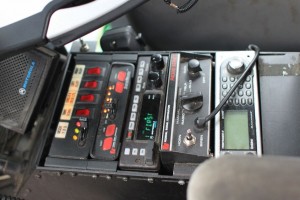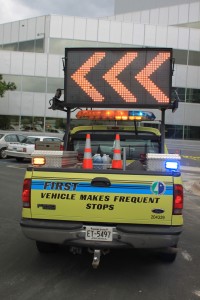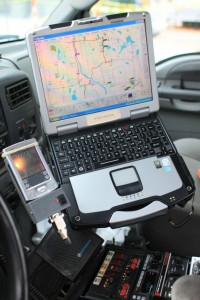Technology Enhances Safety and Service
By Rick DeMeis
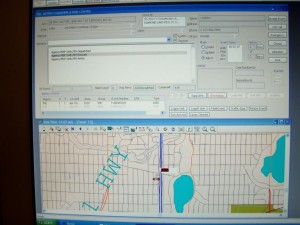
Close-up of CAD station screen. CAD stations are used to communicate with SSPs and log response "stop" timelines.
In a world of changing technologies, Safety Service Patrols (SSP) have improved methods for responding to road incidents. Advancing from recording incidents on paper and relying on verbal descriptions to assess an event, SSP professionals are now often equipped with the latest technologies to increase patrol efficiency in response time, record keeping, and communication.
Frequently, dispatchers use Computer Aided Dispatch (CAD) stations to communicate with SSP and log response “stop” timelines. CAD stations provide a faster and more accurate method for record keeping and eliminate the need for crews to keep records on paper after returning from a shift. Both Minnesota DOT and Tennessee DOT use a combination of CAD and GPS-based Automatic Vehicle Locators (AVL) for position information.
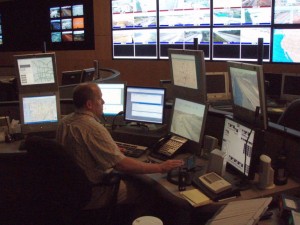
MNDOT TMC with CAD stations and large CCTV traffic network. These technologies allow dispatchers to communicate with SSPs and to see a camera view of the incident scene.
Future challenges for DOT’s that use these technologies include integrating CAD with traveler information and freeway overhead signboard software. This integration will undoubtedly add to dispatcher workload, but the benefits including faster notification to motorists with more comprehensive information, thereby mitigating traffic tie ups.
MNDOT equips each SSP vehicle with a laptop with dedicated Virtual Private Network (VPN) access to the CAD system. This arrangement enables SSP units and State Police to send electronic messages and view other units’ locations.
Tennessee DOT still uses public safety radio channels to direct SSP drivers. Bob Van Horn, TNDOT Incident Management Coordinator, says Tennessee’s system is keyed to minimizing SSP driver “exposure” at stops, thus they do not use laptops or PDAs to record information, which adds to stop time.
In the future, TNDOT hopes to fund speed detection sensor monitoring to identify incident slow downs more quickly. Both John McClellan, MNDOT Freeway Operations Supervisor, and Charles Remkes, PE, Manager of ITS Operations for New Mexico DOT, currently use those microwave sensors to monitor traffic flow (i.e., vehicle numbers and speed (level of service)) on SSP covered roads.
Closed Circuit Television (CCTV) has been a great leap in road safety technology with less reliance on patrol reports. MNDOT has a comprehensive CCTV traffic network to complement traffic sensors, while NMDOT’s traffic center’s full video display wall of traffic-camera images allows dispatchers to “enlarge” images from an area of interest indicated by speed sensors—and then monitor response actions.
On the road, McClellan believes the SSP truck-mounted overhead signboards are extremely effective for warning drivers of SSP presence. McClellan plans to upgrade these VMS signs to LEDs for enhanced visibility and reduced electrical power consumption. Another area for improvement, according to Remkes, is the use of cameras on DOT vehicles giving center operators drivers’ eye views of the road.
All photos courtesy of MNDOT.

